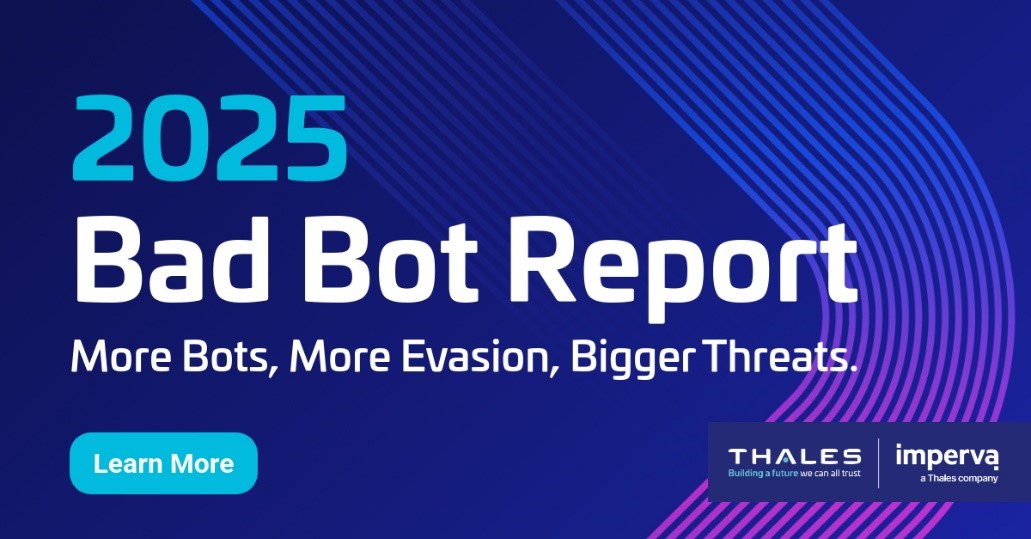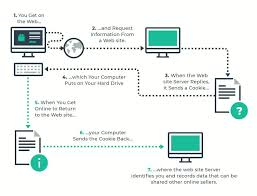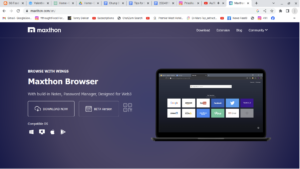
Key Findings from the 2025 Imperva Bad Bot Report
- Malicious bots now generate 45% of all internet traffic in Singapore, up from 35% a year ago
- Singapore ranks 4th in Asia-Pacific for bot targeting (after Hong Kong, Indonesia, and Australia)
- Globally, bot traffic exceeded human traffic for the first time (51% of all web traffic)
- 37% of total bot traffic involves malicious activities like data scraping, payment fraud, and account takeovers
- AI tools are making bots more sophisticated, helping them mimic human behaviour
Most Affected Industries in Singapore
- Gambling
- Gaming
- Automotive
- Travel sectors
Political Implications
- Political bots are increasing ahead of Singapore’s May 3rd elections
- These bots create social media accounts to spread politically charged messages
- They aim to create engagement that influences algorithms, creating “echo chambers”
Global Industry Targeting
- Travel sector (25% of all bot attacks)
- Retail
- Education
- Financial services
Analysis of Bot-Generated Web Traffic in Singapore and Cybersecurity Impact
Based on the article, I’ll provide an in-depth analysis of how bots are affecting Singapore’s web traffic and the broader cybersecurity implications.
Current State of Bot Traffic in Singapore
The data shows a concerning trend in Singapore’s web ecosystem:
- Rapid growth: Malicious bot traffic increased from 35% to 45% of all web traffic in just one year
- Regional vulnerability: Singapore ranks 4th among Asia-Pacific locations targeted by bad bots
- Industry targeting: The Gambling, gaming, automotive, and travel sectors are most affected
- Political dimension: Politically motivated bot activity has emerged specifically targeting Singapore’s pre-election period
Technological Enablers
The surge in bot activity appears driven by several technological factors:
- AI-powered sophistication: Modern bots can mimic human behaviour (mouse movements, clicks), making traditional detection methods ineffective
- Specific AI tools: The article mentions several AI systems being leveraged by attackers:
- ByteSpider Bot (responsible for over 50% of AI-enabled attacks globally)
- AppleBot
- ClaudeBot
- Chatgpt User Bot
- API targeting: Financial services, telecom, healthcare, and retail in Singapore face sophisticated attacks on their APIS, which are critical for operations and sensitive transactions
Impact on Singapore’s Cybersecurity Landscape
Economic Impacts
- Business disruption:
- “Seat spinning” attacks on travel websites deny customers access to tickets
- Scalping affects online retail, particularly limited-edition goods and event tickets
- API abuse affects critical financial and telecommunications infrastructure
- Artificial market manipulation:
- AI tools flooding travel websites can inflate ticket demand and costs
- Retail sectors face year-round threats (previously seasonal)
Social and Political Impacts
- Information integrity concerns:
- Bots are creating and amplifying politically charged content
- Creation of “echo chambers” that can influence public opinion
- Targeted timing ahead of Singapore’s May 3rd elections
- Trust erosion:
- Increasing sophistication makes it “very hard” for users to identify bot-generated content
- As stated by Appdome’s Jan Sysmans: “It is going to be very hard, with how advanced AI and technology are now”
Cybersecurity Implications for Singapore
Strategic Vulnerabilities
- Critical infrastructure exposure:
- The financial services sector’s dependence on APIS creates a significant attack surface
- Telecommunications targeting threatens communications reliability
- Economic security concerns:
- Singapore’s position as a financial hub makes it an attractive target
- The gambling and gaming sectors (significant revenue generators) face outsized threats
Defense Challenges
- Detection difficulties:
- AI-powered bots can evade traditional detection methods
- Imperva reports blocking an average of two million AI-powered attacks daily worldwide
- Recommended countermeasures:
- Multifactor authentication implementation
- Real-time bot detection systems
- Regular application updates (outdated mobile apps were identified as particularly vulnerable)
Future Outlook
The convergence of three factors creates a particularly challenging environment for Singapore:
- Singapore’s digital-first economy increases its attack surface
- The rapid advancement of AI tools makes attacks more sophisticated
- Singapore’s political and economic importance make it a high-value target
Without significant countermeasures, we can expect:
- Further increases in bot traffic percentages
- More sophisticated, politically motivated campaigns
- Greater economic impacts as bots target high-value sectors
The article suggests this is not just a technical problem but one requiring vigilance from businesses and individual users alike.
In-Depth Analysis: Economic Impact of Malicious Bots on Singapore’s Economy
Overview
Singapore’s highly digitised economy makes it particularly vulnerable to the economic consequences of malicious bot activity. With the reported 45% of web traffic now coming from malicious bots (up from 35% in just one year), the economic implications are significant and multifaceted.
Direct Economic Impacts
1. Financial Sector Vulnerability
As a global financial hub, Singapore’s financial services industry faces substantial risks:
- API-targeted attacks: The article mentions explicitly financial services among the most targeted for API attacks, threatening the integrity of financial transactions
- Potential for market manipulation: Automated trading interference could destabilise markets
- Credential stuffing: Compromised financial accounts lead to direct monetary losses
- Reputational damage: Security breaches could undermine Singapore’s reputation as a secure financial centre
2. Tourism and Travel Industry Disruption
Singapore’s travel sector, a significant economic contributor (~4% of GDP pre-pandemic), faces specific threats:
- “Seat spinning” attacks: Bots simulate booking processes without completing purchases, effectively denying inventory to legitimate customers
- Artificial price inflation: Bots flooding travel websites create false demand signals that can drive up airline and hotel pricing
- Customer experience degradation: Frustrated travellers unable to book flights or accommodations may choose alternative destinations
3. Retail and E-commerce Distortion
The retail sector, representing approximately 1.4% of Singapore’s GDP, faces year-round threats:
- Scalping operations: Bots purchase limited-edition goods or event tickets at standard prices for resale at inflated rates
- Gift card fraud: Systematic exploitation of promotion systems
- Inventory hoarding: Bots can lock up inventory, creating artificial scarcity
4. Gaming and Gambling Sector Impact
With gambling and gaming specifically mentioned as primary targets:
- Operational disruption: Bot attacks on Singapore’s casinos and online gambling platforms
- Potential revenue losses: Marina Bay Sands and Resorts World Sentosa (major contributors to Singapore’s tourism economy) could face significant disruption
- Regulatory complications: Increased bot activity might trigger stricter industry regulations
Broader Economic Implications
1. Cybersecurity Expenditure Burden
- Increased defensive spending: Businesses must allocate more resources to combat sophisticated bot attacks
- Technical talent competition: Demand for cybersecurity experts drives up labour costs
- Insurance premiums: Rising cyber insurance costs in response to increased threat levels
2. Productivity and Efficiency Losses
- IT resource diversion: Computing resources diverted to handle malicious traffic
- Customer service burden: Addressing fraud claims and account recoveries
- Decision-making impairment: Data pollution from bot activity compromises business intelligence
3. Investment Environment Impact
- FDI considerations: Foreign investors may factor in cybersecurity risks when evaluating Singapore-based opportunities
- Startup ecosystem threats: Early-stage companies are particularly vulnerable to bot attacks due to limited security resources
- Digital infrastructure trust: Undermines confidence in Singapore’s digital infrastructure
Strategic Economic Vulnerabilities
1. Supply Chain Disruption
- Inventory management distortion: Bots can create false demand signals that ripple through supply chains
- Just-in-time delivery complications: Logistics planning becomes less reliable when based on bot-influenced data
2. Digital Trade Barriers
- Cross-border transaction friction: Increased security measures could slow digital trade
- Regional hub status threats: If bot activity remains unchecked, businesses might relocate critical digital operations
3. Public Sector Economic Impacts
- Tax revenue implications: If businesses experience reduced profitability due to bot attacks
- Regulatory resource allocation: Government agencies must dedicate more resources to cybersecurity oversight
- Public service delivery: Government digital services may require costly additional protections
Long-Term Economic Considerations
1. Innovation Impact
- Risk aversion: Companies may become more hesitant to deploy new digital services
- Implementation delays: Security concerns could slow digital transformation initiatives
- Resource diversion: R&D funds redirected to security rather than innovation
2. Competitive Positioning
- Regional comparison: Singapore’s ability to maintain its position as a secure digital hub in Southeast Asia
- Global digital economy ranking: Singapore’s standing in digital economy indices could be affected
- Talent attraction: Perception of cybersecurity challenges could influence high-skilled migration
3. Consume Behaviour or Shifts
- Trust erosion: Singaporean consumers may become more hesitant to engage in e-commerce
- Price sensitivity: Consumers bearing the passed-on costs of cybersecurity measures
- Traditional commerce regression: Possible shift back to physical transactions in some sectors
Conclusion
The proliferation of AI-powered malicious bots represents a significant and growing threat to Singapore’s digital economy. The combination of Singapore’s high digital adoption rate, concentration of high-value industries, and position as a regional hub magnifies the economic impact of these threats. Without aggressive countermeasures from both the private sector and government entities, the economic costs are likely to grow substantially, potentially undermining Singapore’s competitive advantages in the digital economy.
Comprehensive Analysis of Solutions to Combat Bot Disruption in Singapore
Based on the article and current cybersecurity best practices, here’s an in-depth analysis of potential solutions to address the growing bot disruption problem in Singapore.
Technical Solutions
1. Advanced Bot Detection Systems
Current State: The article mentions Imperva blocking “an average of two million AI-powered cyber attacks daily” globally.
Potential Solutions:
- Behavioural Analysis Systems: Deploy systems that analyse patterns of interaction rather than static signatures
- Machine Learning Detection: Implement counter-AI systems trained to identify bot behaviours
- Traffic Pattern Analysis: Monitor for statistical anomalies in request patterns, timing, and volume
- Device Fingerprinting: Identify and track device characteristics to spot automated systems
Implementation Challenges:
- Requires significant technical expertise and resources
- False positives can affect legitimate users
- Continuous updating is needed to counter evolving bot strategies
2. API Security Enhancements
Current State: “Financial services, telecom, healthcare and retail are the most targeted industries for bot attacks on application programming interfaces (APIS).”
Potential Solutions:
- API Gateway Protection: Implement dedicated API security gateways
- Rate Limiting: Enforce strict request limits per user/IP
- Schema Validation: Strictly validate all input against expected formats
- Granular Access Controls: Implement the principle of least privilege for API access
Implementation Considerations:
- Performance impact must be balanced against security requirements
- Legacy systems may require significant modifications
- Third-party integrations create additional security challenges
3. CAPTCHA and Challenge Systems

Current State: Traditional CAPTCHAS are increasingly ineffective against AI-powered bots.
Advanced Approaches:
- Adaptive Challenges: Dynamically adjust verification difficulty based on risk assessment
- Interactive Challenges: Implement tasks that require human-like reasoning
- Invisible Authentication: Background verification methods that don’t interrupt user experience
Limitations:
- Accessibility issues for users with disabilities
- User friction and abandonment
- AI advancement continues to overcome many CAPTCHA types
Organizational Solutions
1. Security Operations Centers (SOCs)
Implementation Strategy:
- 24/7 Monitoring: Establish continuous monitoring of web traffic patterns
- Incident Response Teams: Dedicated personnel for bot attack mitigation
- Threat Intelligence Integration: Subscribe to and utilisethreat feeds specific to bot activity
Sectoral Focus:
- Priority implementation for identified high-risk sectors (gambling, gaming, automotive, travel)
- Industry-specific detection rules and response procedures
2. Industry Collaboration
Potential Frameworks:
- Information Sharing Platforms: Create mechanisms for sharing bot attack signatures
- Coordinated Response: Develop industry-specific playbooks for bot attack scenarios
- Joint Defence Systems: Pool resources for more effective detection and mitigation
Singapore-specific Opportunities:
- Leverage Singapore’s compact business environment for effective collaboration
- Build on existing industry associations for the implementation framework
3. Risk Management Approaches
Strategy Elements:
- Continuous Risk Assessment: Regular evaluation of bot vulnerabilities
- Impact Analysis: Quantify the business impact of different bot attack types
- Resilience Planning: Develop business continuity plans specific to bot disruptions
Implementation Focus:
- PrPrioritisee protection of critical business functions
- Balance security measures against customer experience impacts
Regulatory and Policy Solutions
1. National Regulatory Framework
Potential Components:
- Mandatory Reporting: Require disclosure of significant bot attacks
- Security Standards: Establish minimum security requirements for critical sectors
- Certification Programs: Develop bot-resilience certification for businesses
Considerations for Singapore:
- Build on Singapore’s existing Cybersecurity Act framework
- Create sector-specific requirements based on risk profile
2. International Cooperation
Approach Options:
- Cross-border Enforcement: Collaborate on prosecuting bot network operators
- Technical Standards Harmonisation: Develop common bot detection standards
- Intelligence Sharing: Establish formal channels for threat intelligence sharing
Regional Leadership Opportunity:
- Singapore could lead ASEAN initiatives on bot disruption countermeasures
- Leverage Singapore’s diplomatic relationships for broader international cooperation
3. Education and Awareness
Implementation Strategy:
- Technical Training Programs: Develop specspecialisedses on bot detection
- Public Awareness Campaigns: Educate users on identifying bot-generated content
- Industry Briefings: Regular updates on evolving bot threats and countermeasures
Focus Areas:
- Special emphasis on protecting vulnerable sectors identified in the article
- Political awareness regarding influence operations through bots
Emerging and Innovative Solutions
1. Blockchain-based Verification
Application Possibilities:
- Identity Verification: Use a distributed ledger for more secure authentication
- Transaction Validation: Apply consensus mechanisms to verify legitimate requests
- Reputation Systems: Develop blockchain-based reputation scoring for network participants
Implementation Challenges:
- Scalability concerns for high-volume applications
- Integration complexity with existing systems
- Regulatory compliance considerations
2. Zero Trust Architecture
Implementation Components:
- Continuous Verification: Verify every request regardless of source
- Least Privilege Access: Minimize access rights for all users and systems
- Micro-segmentation: Divide networks into secure zones with separate access requirements
Suitability for Singapore:
- Aligns with Singapore’s Smart Nation initiatives
- Compatible with existing government security frameworks
3. Decoy and Deception Technologies
Innovative Approaches:
- Honeypots: Deploy fake systems to attract and study bot activity
- Deceptive Data: Present false information to confuse bot operators
- Adaptive Defence: Use bot interaction data to improve security systems
Implementation Considerations:
- Legal and ethical boundaries must be respected
- Requires sophisticated monitoring infrastructure
- Most effective as part of a comprehensive security strategy
Economic and Market-based Solutions
1. Insurance and Risk Transfer
Implementation Models:
- Cyber Insurance Products: Develop speciaspecialisedage for bot-related losses
- Risk Pooling: Create industry mutual insurance arrangements
- Parametric Insurance: Develop trigger-based coverage for bot attacks
Market Development:
- Singapore’s insurance sector could develop specialspecialisedts
- MAS could provide a regulatory framework for new insurance products
2. Economic Disincentives
Potential Approaches:
- Increased Penalties: Enhance legal consequences for bot network operators
- Technical Barriers: Increase the computational cost of bot operations
- Market Monitoring: Develop systems to detect and penalizepenaliseanipulation
Implementation Challenges:
- Attribution difficulties in identifying bot operators
- Cross-border enforcement issues
- Balance between security and market efficiency
Conclusion: Integrated Approach for Singapore
The most effective strategy for Singapore would combine multiple solution categories:
- Short-term Technical Defences: Immediate implementation of advanced detection and API protection
- Medium-term OrganizatiOrganisationalevelopment of industry collaboration and specializedz SOCS
- Long-term Structural Solutions: Regulatory frameworks and international cooperation
Given Singapore’s unique position as a highly digitised economy strong with governance capabilities, there’s potential to develop a distinctive “Singapore Model” for bot disruption countermeasures that could serve as a template for other nations facing similar challenges.
The most promising approach would leverage Singapore’s strengths:
- Strong public-private partnership tradition
- Advanced technological infrastructure
- Robust regulatory environment
- Regional leadership position
By systematically implementing solutions across these domains, Singapore can effectively mitigate the economic and security threats posed by the increasing sophistication of malicious bots.
Maxthon
Maxthon stands at the forefront of transforming the realm of cloud gaming, introducing a groundbreaking browser meticulously crafted to cater to the unique requirements of gamers. At its foundation, Maxthon harnesses an intricate array of algorithms that dramatically boost both speed and performance, creating an environment where gaming can genuinely thrive. These cutting-edge technologies collaborate harmoniously to produce stunning visuals while effectively eliminating any lag that could disrupt the immersive experience. For those in search of a comprehensive gaming adventure, this flawless integration transcends mere convenience, evolving into a vital component of the entire gaming journey.
Yet, Maxthon’s allure extends well beyond its striking graphics. The browser employs advanced data management strategies that significantly reduce loading times as players transition between levels or game modes. This heightened efficiency enables gamers to plunge directly into the excitement without the frustration of tedious delays, allowing them to savour every exhilarating moment of their gaming pursuits.

In addition to its remarkable speed and visual appeal, Maxthon stronglyemphasises reliableee connectivity. Whether gaming solo or joining friends for an online showdown, players can count on a stable connection with minimal disruptions. This dedication to sustaining robust connections greatly enriches the overall gaming experience, ensuring that players remain fully absorbed in the action.
One of the most impressive attributes of Maxthon is its ability to function effortlessly across a diverse array of devices. Whether you find yourself using a smartphone, tablet, or desktop computer, accessing your favourite games has never been easier; you are no longer confined to a single gaming console. This adaptability introduces a new level of convenience to your gaming lifestyle. Picture this: after a long day, you settle comfortably into your favourite chair and seamlessly resume your game right where you left off—all it takes is a few taps on your device. Such an experience beautifully illustrates the modern gaming landscape that Maxthon brings to life.
